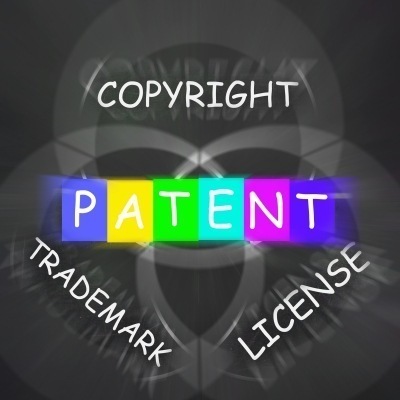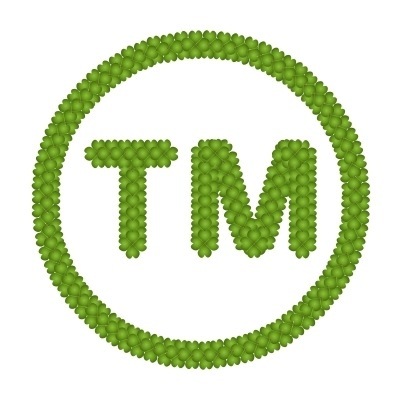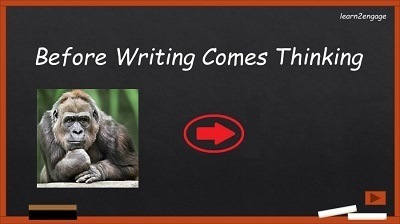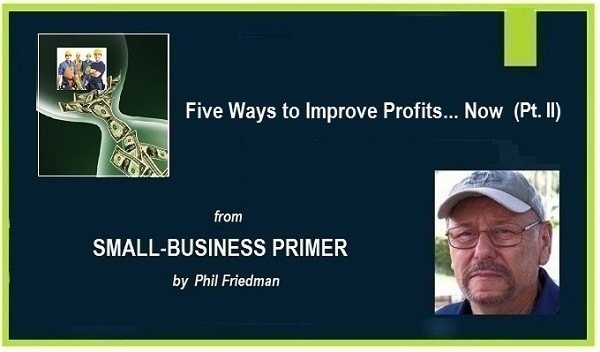Writer's Concise Guide to Copyright, Trademark, Patent & Plagiarism - I

Copyright is established as a matter of law in most nations and as a matter of "conventions" or treaties internationally, including the Berne Convention, UCC Geneva, UCC Paris, TRIPS, and the WIPO Copyright Treaty.
Violation of copyright involves taking the original work of an author or artist, and using that work, or substantial parts of it, without permission of its creator or the holder-in-due-course of the copyright to that work.
Under U.S. copyright law and by international treaty, the original creator of a written work or image is, by virtue of publishing his or her creative work, granted a "creator's copyright."
"Owning the copyright to a unit of intellectual property is not the same as registering or making public notification of that copyright..."
Registering your copyright with, for example, the U.S. Copyright Office, does not confer copyright; it only records your claim to having the copyright. And is one step in removing the "Gee, I didn't know this was copyrighted" excuse from the arsenal of wanton violators of intellectual property rights.
You can register your copyright to a work in about 15 minutes of work and at a total cost of about $10 to $20.
Taking a copy of your manuscript and snail-mailing it to yourself in a sealed envelope is useless. It is an old wives tale that it can establish or prove creator's copyright in court.
Firstly, because in order to establish "creator's copyright", you have to publish the work. Keeping a manuscript locked up in your drawer, or sealed away in an envelope that you mailed to yourself does not constitute publishing that work. Registering that work by providing a copy of it to the U.S. Copyright Office does constitute "publication" and so is a protection... but not one you necessarily have to use.
Publishing an original work in the form of a print media article or book,ipso facto, establishes your creator's copyright. However, that may not be sufficient. Most violators are given a second chance by the Courts when they plead ignorance. The best way to head off a violator's excuse of ignorance is to post a notice of copyright on the work itself.
"Copyright © 2015 by Phil Friedman —All Rights Reserved"
The symbol "©" is the universally established indicator of copyright under various international treaties and conventions. It's presence in your notice of copyright is important as an indication of under which laws and treaties you are asserting your claim to ownership of the copyrighted material in question.
Even if you can prove violation of copyright, you may not be able to do more than force the violator to stop using your intellectual property without permission. (And even accomplishing that may turn out to be cost-prohibitive.) Moreover, once you've removed the initial reliance on ignorance as an excuse, you still have to prove monetary damages.
"If you regularly give away your work for free on the Internet or publish gratis on social media platforms, how can you establish that using your work without permission actually damages you monetarily?"
You need to understand that copyright does not protect ideas. Copyright only applies to the published expression of those ideas. If you want to protect an original idea or concept that has commercial or monetary value, you will have to seek a patent,which may or may not be available, depending on the precise nature of your idea or concept. More on patents in a bit.

The use of "TM" or "SM" is de facto a declaration that you assert a claim to owning a particular styled word, name, symbol or design, and to having used such in business or commerce for a significant period of time.
However, use of "TM" or "SM" does not mean that your trademark rights have been recognized by the U.S. Trademark Office, or that you have registered your claim to that trademark. In the absence of your long-time use of a particular word or design becoming a universal icon like the Coca Cola logo, only registering your trademark with the U.S. Trademark Office establishes a strong claim to its use in law.
" In general, the ® carries a hell of a lot more weight than TM or SM..."

Plagiarism is not the same as violation of copyright. Plagiarism is not a violation of law, but rather a violation of ethical tenet. Plagiarism is the act of taking the work of another author or artist, and presenting it as your own.
As I pointed out in a previous article on plagiarism , if you take someone else's work and present it as your own, without credit or attribution to the original creator, that is plagiarism.It may, or may not be violation of copyright.
For example, if without permission you use a work or a substantial portion of a work that is copyrighted, even if you attribute the work to the original author or artist, that use is a violation of copyright.
If you take a work that is in the public domain (no longer protected by copyright), such as Ben Franklin's "Poor Richard's Almanac", and present it without attribution, as your own work, that is an act of plagiarism, although not a violation of copyright.
"Some acts of plagiarism may be accompanied by violation of copyright, but the two forms of theft remain different and distinct."
Of course, both violation of copyright and plagiarism are reprehensible in a society that pays so much lip service to merit. And it behooves us all, writers, publishers, and readers to not treat instances of the theft of intellectual property with indifference, but to accord them the disapprobation they deserve. — Phil Friedman
Author's Note:
About me, Phil Friedman:
With 30 some years background in the marine industry, I've worn numerous hats — as a yacht designer, boatbuilder, marine operations and business manager, marine industry consultant, marine marketing and communications specialist, boating magazine writer and editor, yacht surveyor, and marine industry educator. I am also trained and experienced in interest-based negotiation and mediation. In a previous life, I taught logic and philosophy at university.
If you'd care to read more of what I write on a regular basis, either connect with me, Phil Friedman, on LinkedIn, or click the [FOLLOW] button on this page. As a writer-friend of mine says, you can always change your mind later.
As well, feel free to "like" and "share" this post and my other LinkedIn articles — whether on LinkedIn, Twitter, or Facebook. I ask only that you credit me properly as the author. Some other of my work that you might like includes:
"Three Points of Advice to My Teenage Daughter"
"What I Learned About Entrepreneurs from the Founder of Monster.com"
"So Why is Plagiarism Such a Big Deal?"
-- Fair Winds and Safe Harbors
The (optional-to-read) pitch: As a professional writer, editor, university educator, and speaker, with more than 1,000 print and digital publications, I've recently launched an online program for enhancing your expository writing: learn2engage — With Confidence. My mission is to help writers and would-be writers improve the clarity of their thought and writing, master the logic of discussion, and strengthen their ability to deal confidently with criticism and disagreement.

For more information, click on the image directly above. Or to schedule an appointment for a free 1/2-hour consult email: info@learn2engage.org.
Images Credit: Stuart Miles and FreeDigitalPhotos.net

#COPYRIGHT #PATENTS #WRITER'SGUIDE #WRITING #PUBLISHING #TRADEMARK #INTELLECTUALPROPERTY #UNDERSTANDINGCOPYRIGHT
Articles from Phil Friedman
View blog
RUNNING ON RAILS DOESN'T GET YOU ANYWHERE, WHEN THE TRACK DEADENDS... · If you are tired of having y ...

MAKE NO MISTAKE: TRADING IN CRYPTO-CURRENCIES IS A ZERO-SUM GAME... · The number of cryptocurrencies ...

IMPROVE CAPTURE OF BILLABLE HOURS TO BOOST GROSS PROFIT WITHOUT ADDED OVERHEADS... · Preface: · This ...
Related professionals
You may be interested in these jobs
-

Upper School English Teacher
3 weeks ago
Trevor Day School New York, United States Full timeTrevor Day School is seeking a full-time Upper School English Teacher for the academic year. Candidates should be prepared to teach various English classes, which may include 9th-grade English, 10th-grade English, and electives for 11th- and 12th-grade students. All Trevor teache ...
-
front desk agent
4 days ago
Best Western , FL, United StatesRecently rebranded to the Quality Inn Southside Jacksonville · HDG Hotels owns and operates hotels through out the Southeastern Region. Our company offers health, vision and dental insurance; a 401K match; paid time off; and other benefits in an effort to put our people first. If ...
-
InSync Healthcare Recruiters Flagstaff, United StatesSeeking an experienced or new graduate Nurse Practitioner to join busy Pain Management group in Flagstaff, AZ. Full-time or part-time option · This highly regarded group prides itself on creating a positive work environment while providing caring and respectful treatments for ea ...

Comments
Phil Friedman
7 years ago #4
Not to worry, Wayne, frequently readers write to say they wish they HAD missed my piece. So you reading it late is certainly better than never — at least for me. Thanks for reading and commenting. And cheers!
Wayne Yoshida
7 years ago #3
Phil Friedman
8 years ago #2
@Tom George - yes. thank you for the kind words.
Phil Friedman
8 years ago #1
Sorry, Michael Angelo Icarus Yusufidis, but I do not see that there is any conflict in creating and not presenting the work of others as one's own (plagiarism). Ideas are not copyright, only the words that express them. So if you want to build on the ideas of others, which most of us do, you are free to do so, both legally and ethically. You are just not allowed to copy and paste, and then call it your own. Cheers!